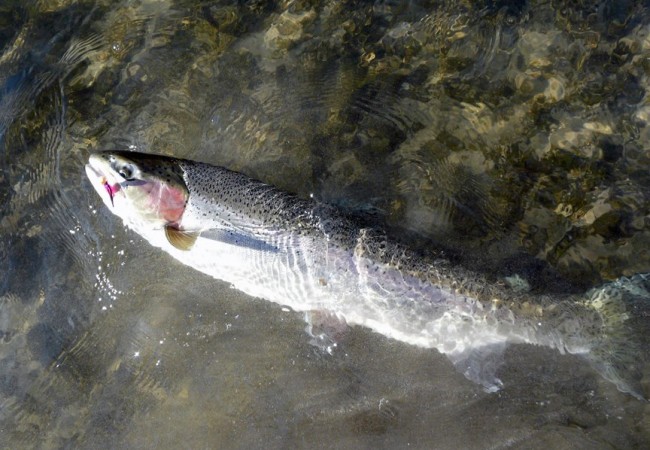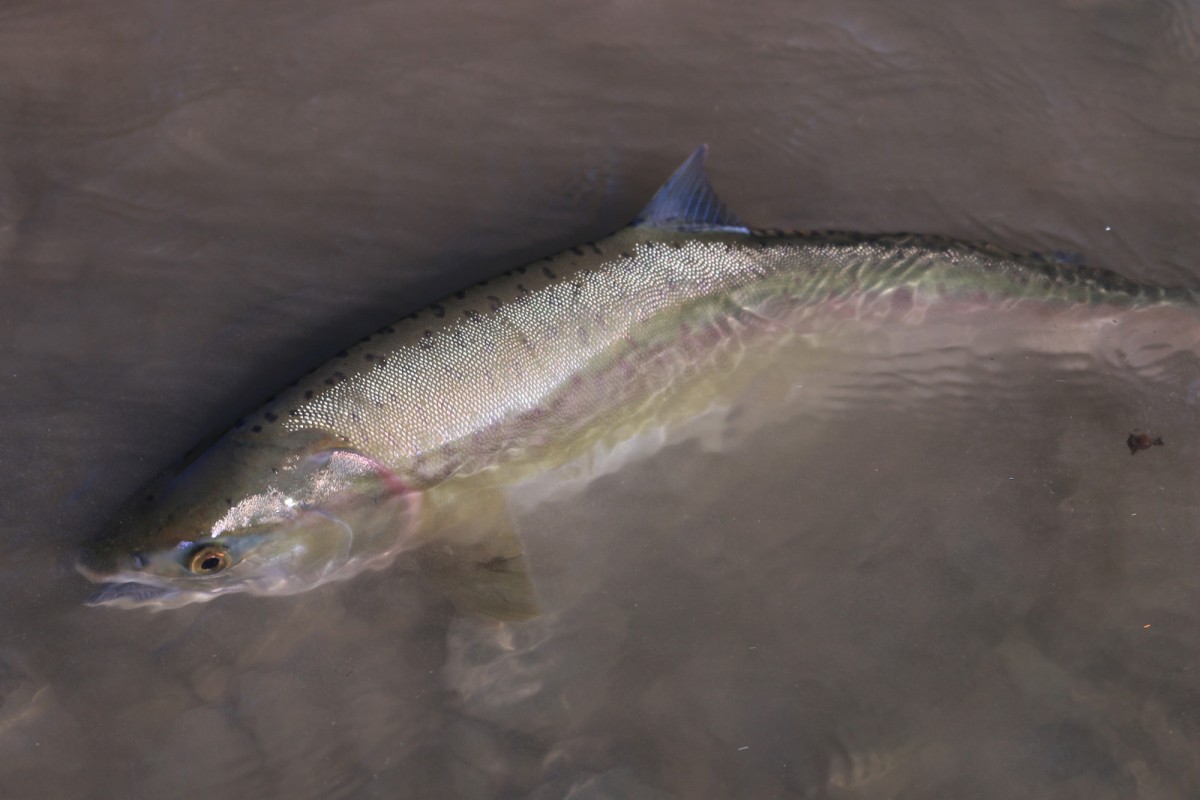Ashlu Creek (also known as Ashlu River) is a little…

Catch and Release: What You Should Know
More anglers are choosing to release the fish they catch. While this is clearly a positive trend, throwing a fish back doesn’t automatically ensure it survives. In fact, an exhaustive study by the Ontario Ministry of Natural Resources shows that 16% of released fish die. That’s a lot of dead fish, most of which could be saved by proper handling.
Lately, with our severe drought and record low stream levels in the Pacific Northwest, there’s more stress on the fish than ever. So it’s probably best just to stop fishing until the rains come (and they will come, don’t worry).
In any event, here’s what you need to know to help your released fish survive:
- Use barbless hooks. Buy them barbless, or pinch barbs flat with pliers.
- Land fish as quickly as possible to prevent exhaustion.
- Wet your hands before handling the fish. This minimizes the removal of their protective slime.
- When possible, don’t take fish out of the water or even touch them. Remove the hook with pliers.
- If you must handle your fish, handle with care! Squeezing, putting fingers into gills, dropping the fish–all can be fatal.
- If you use a landing net, buy the knotless kind, preferably made with soft rubber.
- If you’ve hooked the fish deeply, cut the line and leave the hook in. Studies show less mortality than if you try to remove the hook.
- With exhausted fish, hold them gently, upright, facing into the current until they revive and swim away. If there’s no current, move the fish back and forth to push water through the gills.
Here’s the Ontario Ministry of Natural Resources report on catch-and-release angling. It’s worth a thorough read:




